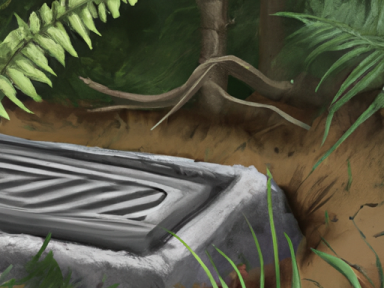The concept of designing and digging pitfalls as a defense against intruders or predators is an important skill to have in your arsenal of self-reliance tactics. In times of societal collapse or even during regular day-to-day survival situations, the ability to protect yourself and your homestead becomes crucial.
Picture this: an intruder approaches your property, unaware of the hidden dangers that lie beneath the surface. As they step onto your land, they trigger a trap that instantly plunges them into a deep pit. Suddenly, you have the upper hand, and the intruder is left helpless and at your mercy.
Why Craft Defensive Pitfalls?
When it comes to defending your home and loved ones, it’s essential to think outside the box and consider alternative methods of protection. Defensive pitfalls offer a discreet and effective solution for deterring unwanted visitors and preventing potential threats.
Here are a few reasons why crafting defensive pitfalls should be on your priority list:
- Stealth: Unlike standard physical barriers, pitfalls can remain hidden, catching intruders off-guard as they unsuspectingly traverse your property.
- Low Cost: Building a pitfall requires minimal investment compared to other defensive measures such as fencing or security systems. The materials required are often readily available in nature or can be repurposed from everyday items.
- Minimal Maintenance: Once properly constructed, pitfalls require little to no maintenance. They are a set-it-and-forget-it solution, allowing you to focus your time and effort on other survival tasks.
- Psychological Deterrence: The threat of falling into a pitfall can instill fear in potential intruders, acting as a potent psychological deterrent. The element of surprise and the fear of the unknown can be far more effective than traditional visible barriers.
Designing Your Defensive Pitfall
Effective pitfall design involves careful planning and consideration of various factors. Here are some key elements to keep in mind:
- Location: Identify strategic areas on your property where intruders are likely to pass through, such as access points or commonly used paths.
- Depth: Your pitfall should be deep enough to prevent intruders from easily escaping but not so deep that it becomes impossible to retrieve them or presents a danger to livestock or unintended victims.
- Camouflage: Conceal the pit by using natural materials, such as leaves, branches, or dirt, to make it blend in seamlessly with the surrounding environment.
- Trigger Mechanism: Choose a reliable mechanism to activate the pitfall, such as a tripwire or pressure plate. Ensure the trigger is sensitive enough to respond to the weight or movement of an intruder but not overly sensitive to false triggers.
- Warning Signs: Consider placing warning signs near your property boundaries to notify visitors that hazards may exist.
Digging Your Defensive Pitfall
When it’s time to dig your pitfall, careful execution is essential to ensure its effectiveness. Follow these steps:
- Measure and Mark: Using stakes and string, outline the desired size and shape of your pitfall. Ensure your pit is wide enough to accommodate an intruder but not too wide that it compromises stability.
- Clear the Area: Remove any vegetation or debris from the pitfall area to prevent it from interfering with the trap’s functionality.
- Start Digging: With a shovel or other digging tool, begin excavating the pitfall. Remember to dig deeper towards the center to create a sloping or vertical wall.
- Smooth the Walls: Use your hand or a trowel to smooth the walls of the pit, minimizing the risk of an intruder being able to climb out.
- Prepare the Bottom: Remove any sharp objects or rocks from the bottom of the pit. You can also consider adding a layer of leaves or soft material to cushion the fall and reduce the likelihood of injuries.
- Camouflage: Conceal the pitfall using natural materials, ensuring the trap remains hidden from view.
- Test the Trigger: Before considering your pitfall complete, test the trigger mechanism to ensure it activates smoothly and reliably.
Conclusion
In a world where self-reliance and the ability to protect oneself are paramount, crafting defensive pitfalls can be a powerful tool. Remember to prioritize safety when constructing these traps and use them responsibly, ensuring that unintended victims or innocent bystanders are not put in harm’s way. By developing your skills in designing and digging pitfalls, you’ll be better equipped to defend your homestead and ensure the security of your loved ones in times of crisis.




GIPHY App Key not set. Please check settings